The Science of Soccer / La física de fútbol
A special for the World Cup: how do the world’s best “bend it like Beckham”?
“Soccer matches should be something special, something people eagerly look forward to, something that brightens life.” –P. J. O’Rourke
Once every four years, World Cup fever seizes hold across the globe, and the universal language of athletic excellence and artistry speaks its poetry and beauty to us all. But there’s one particular type of play — the set shot — that offers not only some of the best suspense you’ll ever experience at a sporting event, but some of the most remarkable science, too!
https://www.youtube.com/watch?v=COmVHgPBCGo
Those of you who followed the 2006 World Cup closely may remember this spectacular free kick goal by David Beckham, where the ball literally curved in midair and curled just beyond the outstretched fingertips of the Ecuadorian goaltender and just inside the goalpost. Beckham may be famous for bending the ball, but he’s hardly the first or only one to do so.
The above angle doesn’t really showcase just how spectacular a shot like this is, so have a look at the best example I’ve ever seen of a curving free kick like this: Roberto Carlos’ 115 ft. (35 m.) free kick against France in 1997. Make sure you watch the slow-motion replay to see the details!
There’s a wall of defenders set up, Carlos kicks the ball well wide of them — and apparently, the goalpost as well — only to have the ball break in midair and arc just inside the goalpost, skimming it for a seemingly miraculous goal!
Only, it isn’t a miracle at all, it’s physics! There are two things the kicker needs to control, and nature will take care of the rest. Let’s break down how a kick like this works.
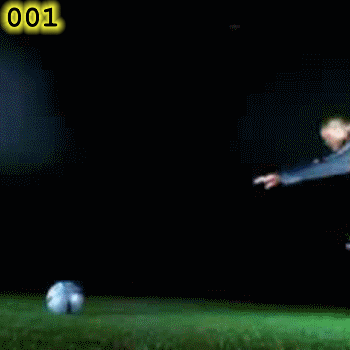
1.) Incredible speed. The first step in a kick like this is to get the ball moving as quickly as possible, which is some of the most straightforward physics there is: simple momentum transfer. A regulation soccer ball weighs about 14-16 ounces (410-450 grams), while a human leg is much heavier. However fast a human can swing their foot at the moment of impact with the ball, that ball can rocket off at up to twice that speed, a consequence of a nearly perfect elastic collision between a heavy mass (the leg) and a light one (the ball).
For the Roberto Carlos goal you saw earlier, the ball achieved an initial speed of a phenomenal 70 miles-per-hour (110 kph)! There’s an important physical reason that making the ball move fast is so important, but it only works if you start the ball off moving with a large velocity in combination with something else.

2.) Very fast spin. If you don’t spin the ball, it will simply travel through the air in the direction of its initial velocity (shown in green) affected by two forces only: the force of gravity, which works to accelerate it down towards the center of the Earth, and air resistance, which works to slow its motion. But if you can make the ball spin, you can get a third force in on the action: the Magnus Force, which pushes the ball to one side dependent on its rotation. This is a less intuitive force than the other two, but it’s the all-important one for making it curve unexpectedly. The first thing you need to make sure of is that the ball is spinning with an axis-of-rotation that’s as close to perpendicular as possible to its velocity.
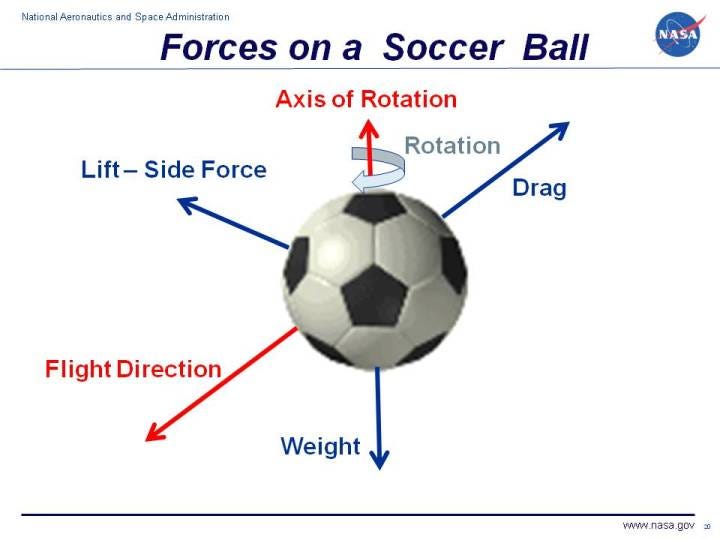
The ball normally has air flowing around it as it rushes past on all sides, but if it’s spinning, one side is going to have the ball moving in the same direction as the moving air (atop, in the image above) while the opposite side will have the ball’s spin oppose the air’s motion (bottom, in the image above). Where the motion is opposed, the air becomes higher-pressure and exerts a slightly increased force from normal, while where the motion flows together, the air pressure drops and exerts a slightly decreased force, causing the ball to experience an additional force in that sideways direction.
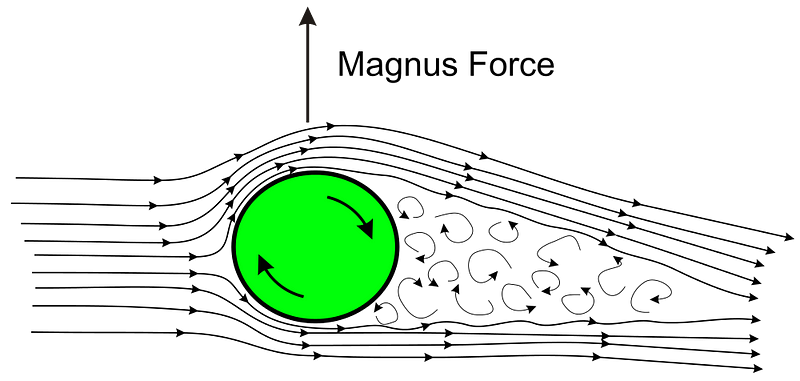
That’s how a spinning soccer ball bends in general; for Roberto Carlos’ kick, the ball left his foot spinning at about 700 RPMs, or around 12 revolutions-per-second. But there’s even more to the story than simply curving the ball in a nice arc; if you kick it just right — like we’ve described — you can make the ball appear to “break” in mid-air! The key is to understand how the air flows around the ball.
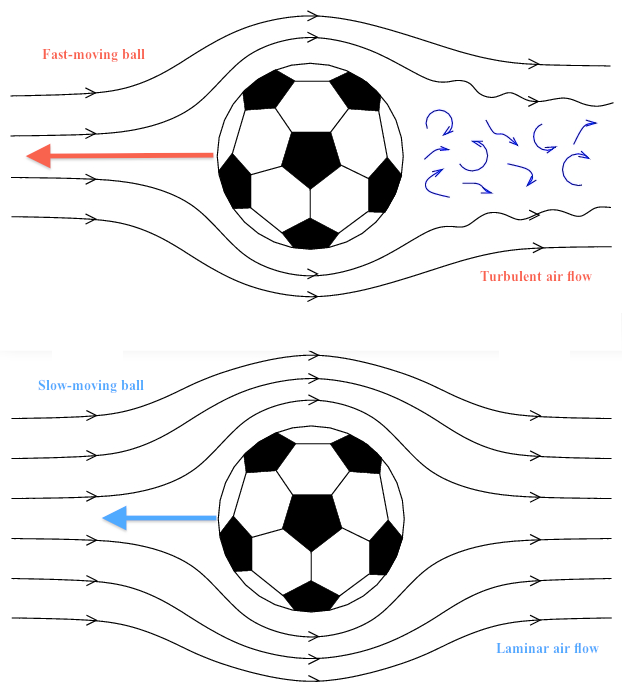
The faster a soccer ball moves, the more of a turbulent wake it leaves behind it. Over time, air resistance will slow down a soccer ball no matter how quickly it was kicked, and less of the flow becomes turbulent while more of the flow becomes laminar as its speed drops.
The faster the ball moves, the greater the amount of turbulence of the air that flows around it, while the slower it moves, the less turbulent and more laminar the flow can be. Eventually, a ball slowed by air resistance will wind up moving slow enough that the entire flow around it will be 100% laminar.

Now, let’s add the spin back in. This is important because it’s only the portion of the air that flows in a laminar manner that can create the Magnus force; the turbulent air can’t do it!
So let’s imagine we’ve got a soccer ball moving with a large initial speed and a large initial spin that remains constant throughout the ball’s flight. As air resistance plays a role and the ball’s speed drops, the airflow around the ball becomes more laminar, and the Magnus force increases! If we add those forces in to the scenario pictured above (imagine the ball spinning clockwise), here’s what we’d see.

The ball’s lateral motion will increase — it will accelerate sideways — as it slows down, thanks to the airflow around it becoming smoother. And so what does this mean when we put it all together?
If you start out with a fast-moving, fast-rotating ball, it’s going to begin moving in a nearly straight line, curving only slightly due to its rotation. As it encounters a large amount of air resistance, its speed will drop and the airflow around it becomes smoother. As long as it’s still rotating rapidly, the Magnus Force — the force that causes it to accelerate sideways — will increase, causing it to speed up more-and-more as the ball’s flight path continues.
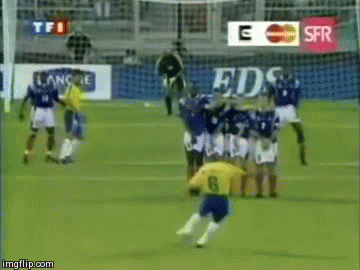
And if a footballer has practiced this enough, they can execute what looks like an impossible shot routinely and with incredible precision.
That’s the science of the most sublime soccer shots, all thanks to the incredible physics of fútbol!
Have a comment? Chime in at the Starts With A Bang forum on Scienceblogs!





